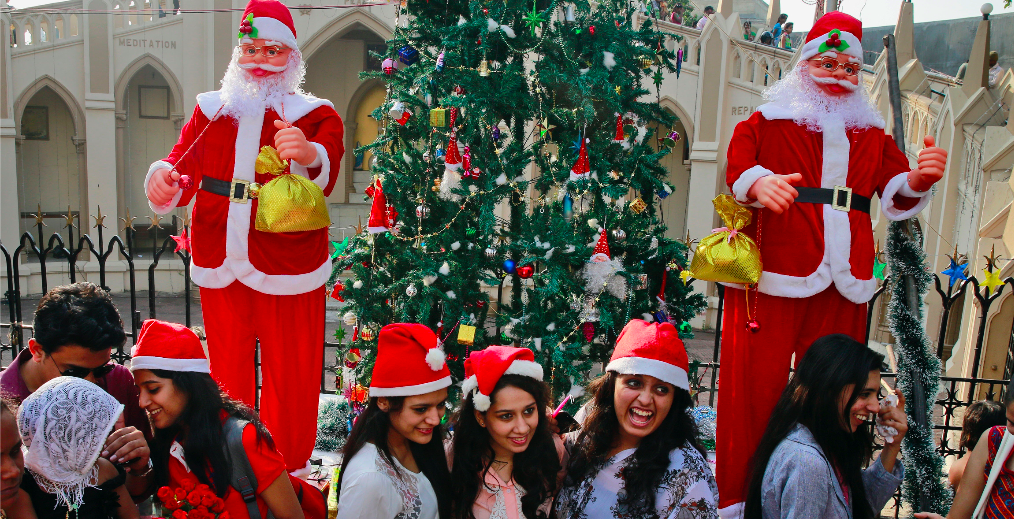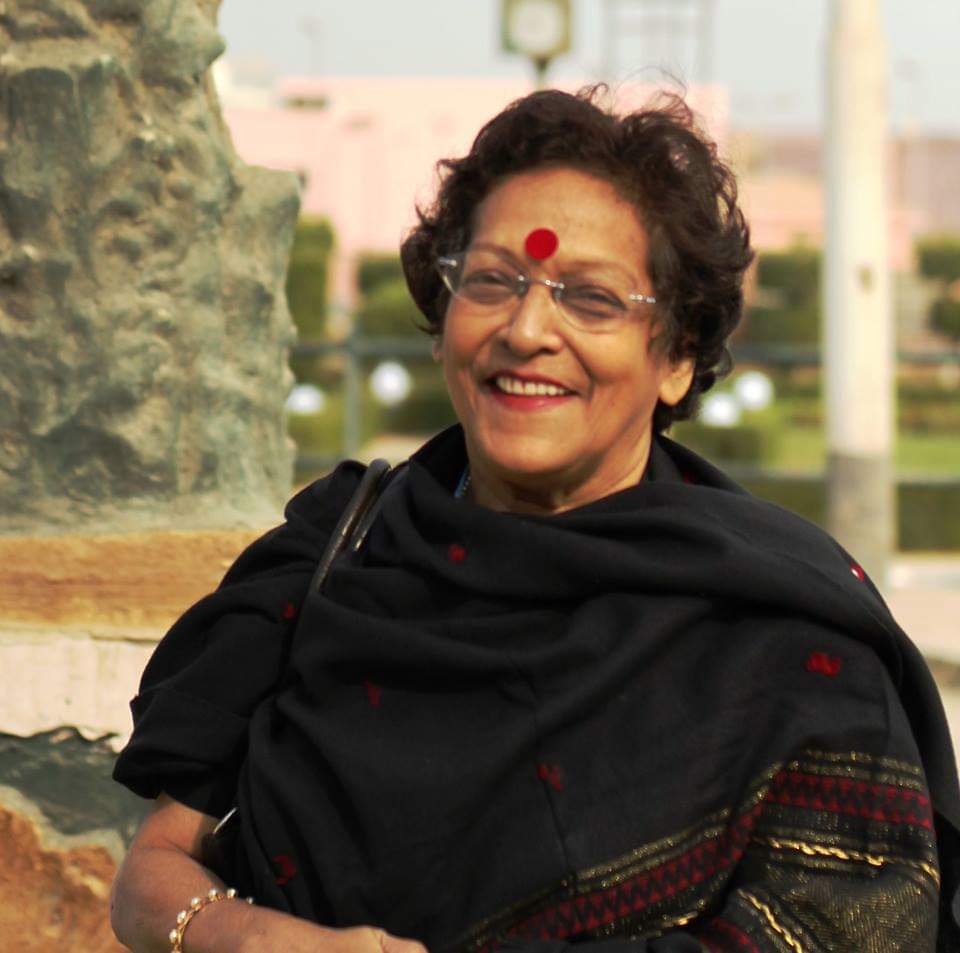The only associations we have with Christmas is that it is mainly a Christian festival celebrated across the world in different, colourful ways from 25th December which happens to be the birthday of Lord Jesus Christ and closes around the New Year. Other associations are linked to Santa Claus bringing gifts at midnight and stuffing children’s stockings with these gifts when children are asleep; or, the exchange of Christmas cards now easily done online through the Internet. The plum cake, the roasted turkey, sweets specially designed for Christmas and often home-made, and the famous Christmas tree filled with glass baubles and gifts and the mistletoe. Candles and colourful lanterns conventionally with a hexagonal design decorated with transparent coloured paper form an inevitable part of the festival.
Exchange of cards and gifts
Did you know that the first ever Christmas card was created by John Calcott Horsley, an English illustrator in 1843? The message on the card which looked very much like an ordinary postcard, said, “Merry Christmas and a Happy New Year to You” showing a large family enjoying a Christmas celebration. A 1000 copies of the card were sold out soon after it hit the market. By 1860, the custom of exchanging Christmas cards had spread throughout Great Britain. Louis Prang, a German-born painter who lived in Boston, USA, manufactured the first Christmas cards in the US in 1875. Today, the Christmas card is ‘father’ to all variants in cards expressing emotions that perhaps, might not be possible to convey in person.
The custom of giving gifts to relatives and friends on a special winter day probably began in ancient Rome and northern Europe. It is said that in ancient Rome, the customers of their employers gave apprentice workers money gifts in small boxes and this custom could be traced back to this practice. By 1100, St. Nicholas had become a popular symbol of gift giving in many countries. Legend says that he brought presents for children on the eve of his feast day, which fell on December 6. Non-religious figures replaced St. Nicholas in certain countries and December 25 became the day for exchanging gifts.
Today, Santa Claus brings presents to children in USA, Australia and Canada. Other countries have their own versions of Santa Claus such as Father Christmas in the British Isles, Pere Noel in France and Weihnachstmann in Germany. St. Nicholas still brings gifts for children in the Netherlands, Austria, Belgium and parts of Germany. The custom of hanging stockings by the fireplace probably evolved from the tradition of children filling shoes with straw and carrots for Santa’s horse (at that time, the legend went that he came on a horse-drawn chariot and not on a reindeer-drawn sleigh) and placing them in front of the fireplace. In Australia, the British Isles, New Zealand and parts of Canada, people exchange presents on Christmas day and on Boxing Day, the day following Christmas.
How it is celebrated across the world
A traditional Christmas dinner includes stuffed turkey, mashed potatoes, cranberry sauce, and a variety of other dishes. All Christian women go in for a heavy binge of baking and steaming and kneading of dough for all kinds of cakes, sweets and savouries weeks before Christmas is to begin. Some families prefer roasted goose to turkey. Favourite desserts include a mince pie or a pumpkin pie, plum pudding and a fruitcake. Eggnog is a popular beverage though now everyone goes in for hard drinks like scotch and merrily gets tipsy. But most people in England still drink punch today made up of wine, other alcoholic beverages, fruit and spices.
The word ‘carol’ came from a Greek dance called choraulein, which would be accompanied by music, played on the flute. This dance later spread right across Europe and became especially popular among the French who replaced the music on the flute with singing. By the 1600s, carols evolved into songs alone and the dance disappeared into history. Christmas turned into the main event for the singing of these carols. Most of the carols sung today were originally composed in the 1700s and 1800s.
An Austrian priest named Joseph Mohr on Christmas Eve in 1818 wrote “Silent Night, Holy Night,” one of the most popular carols to this day. Franz Gruber, the organist of Mohr’s church, composed the music the same night and the carol was sung at midnight Mass. “O Holy Night”, another famous carol, was introduced at midnight Mass in 1847. Adolphe Adam, a French composer, wrote the music. Popular non-religious carols include “Jingle Bells” and “White Christmas.” In England, during the days preceding Christmas, children or groups of adults go from house to house singing Christmas carols. They arrive around midnight waking children from deep sleep and ask them to join in, never mind if they are groggy with sleep.
Children ask for money for themselves, which they generally use to burn “the old man” for the current year and welcome the New Year but adults usually ask for money for charitable purposes. Churches have their own carol-singing groups and they invite donations to the church charity. This tradition began many years ago when visitors sang carols in return for a drink from the ‘wassail bowl.’ This bowl contained a hot punch made from ale, apples, sugar, eggs and spices.
In Mexico, celebrations begin nine days before Christmas. These days are called posadas, which mean inns or lodgings. On each of these nine days, Mexicans re-enact Mary’s and Joseph’s search for lodgings on the first Christmas Eve. After each posada ceremony, they feast and celebrate. Children enjoy by trying to break the pinata, a brightly decorated paper or clay figure containing candy and small gifts. Shaped like an animal, an elf, a star or some other object, it is hung from the ceiling and children take turns trying to hit it with a stick blindfolded. When a child breaks the piñata, the gifts and the candy scatter across the floor and the children scramble for their share of the booty.
In Venezuela, people have a late supper after returning from midnight Mass on Christmas Eve. The meal consists of hallacas, which are corn meal pies stuffed with chicken, pork, beef and spices. In Argentina, a favourite Christmas dish is called ninos envultos (wrapped children) that are slices of rolled beef filled with seasoned mincemeat. In the Phillipines, people attend Misas de Gallo (Masses of the Cock) celebrated early each morning on the nine days before Christmas. On Christmas Eve, they carry colourful, star-shaped lanterns called ‘paroles’ and parade the streets holding these aloft, which are later displayed in the windows of most Filipino homes. Christians in Asian countries too are often found to display similar lanterns at their windows, which Indians also do during Diwali.
Christmas is not just a festival; it is a cross-cultural and global celebration, which has gained in popularity across the world. Though there are cultural variants, certain customs are common such as the custom of exchanging gifts, never mind how big or small; or, the custom of exchanging Christmas cards with members of the family, friends and relatives. This sending of cards is a kind of reaching out to close people living in distant lands, and letting them know you remember and you care. Another attractive practice is that of feasting with turkey and the plum pudding taking top place in the rankings. Christmas is one of the most favourite festivals for children because for them, it personifies the arrival of Santa Claus with his bag of gifts, one for each child.


 [/column]
[/column]